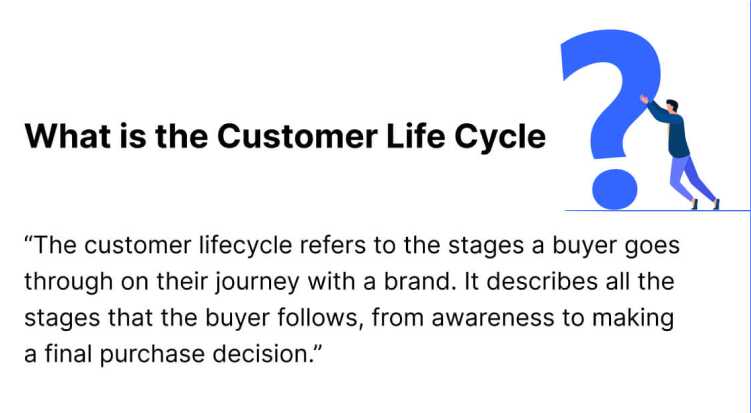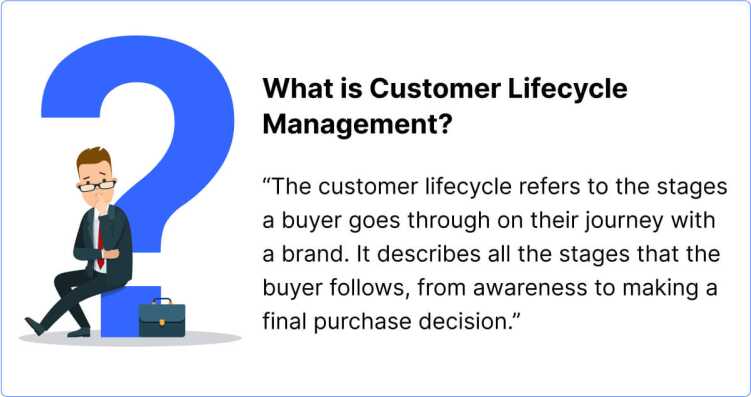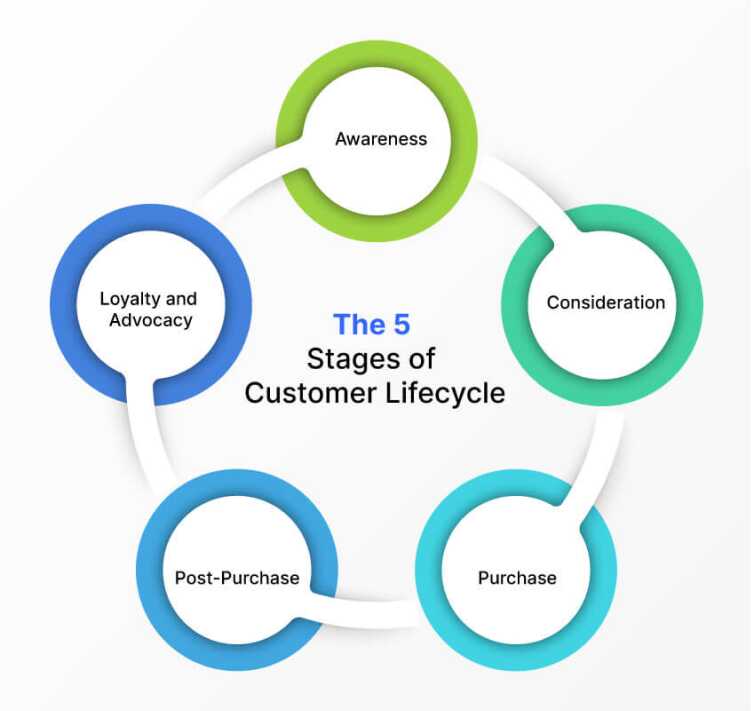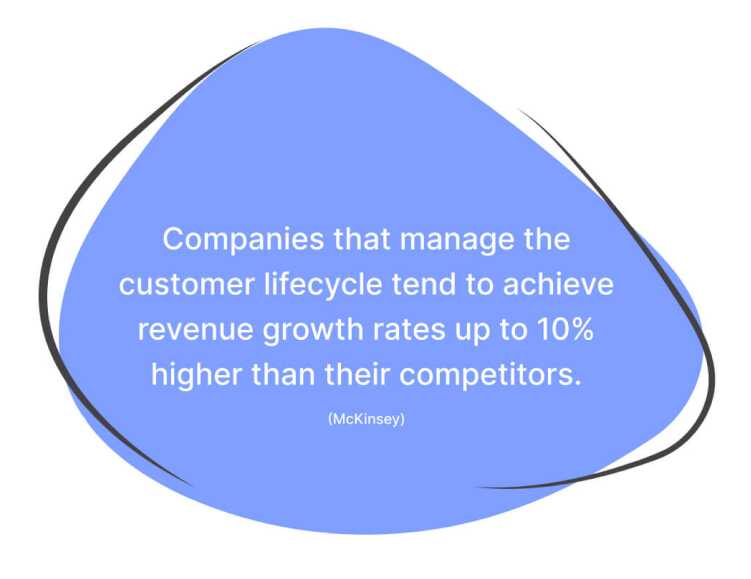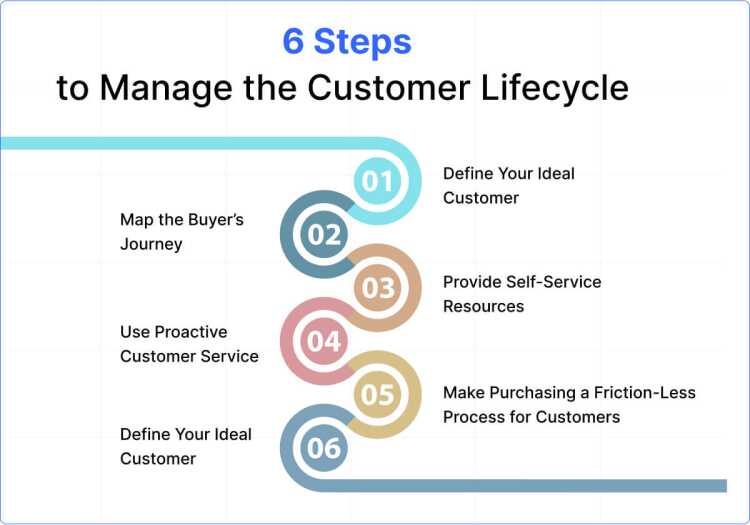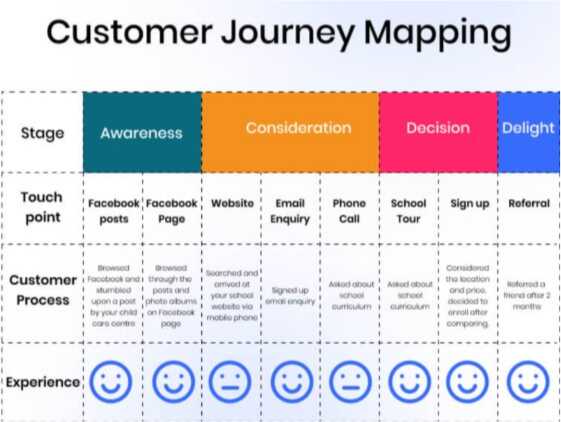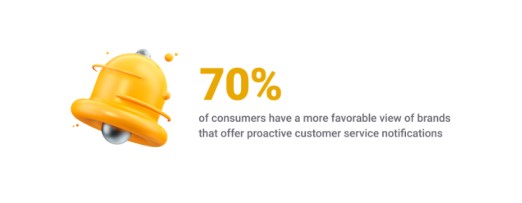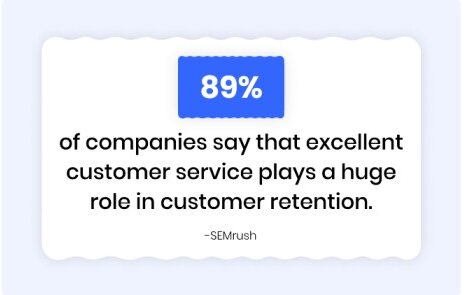MySpace was once the most prominent social networking site in the world. During the mid-to-late 2000s, it peaked with over 75 million users. For close to a decade, the company enjoyed great success with every metric witnessing an upward trend. Things however took a turn when Facebook entered the market with unique features and it soon overtook MySpace.
While financial aspects and poor management are attributed as major factors behind the fall of MySpace, other factors were also at play. As per industry experts, the inability to prioritize user experience led to the downfall of once a flourishing enterprise. Since Facebook offered a more user-friendly experience and understood customer lifecycle better, users migrated to it, resulting in the decline of a promising business.
This example highlights the value of understanding and prioritizing the customer lifecycle. It also emphasizes the virtues of anticipating and meeting customer needs. More so, successful enterprises are aware of the value of providing a positive user experience, adapting to the changes, and maintaining customer trust.
In this blog, we will explore customer lifecycle management in detail, understand its importance and stages, and also learn about the steps to manage a customer lifecycle.
But first, let’s get started with understanding what the customer lifecycle is…
What is the Customer Lifecycle?
The customer lifecycle is the depiction of the stages a buyer goes through on their journey with a brand. It describes all the stages that the buyer follows, from awareness to making a final purchase decision. Also known as the customer experience lifecycle, it also refers to the stages that a customer passes through while interacting with a brand.
For a business, understanding the customer lifecycle is key to identifying opportunities for improvement and tailoring its customer service efforts. Businesses can build stronger bonds with customers and increase customer loyalty when it takes customer lifecycle management seriously.
What is Customer Lifecycle Management?
Customer Lifecycle Management (CLM) is a strategic approach to manage and optimize the entire customer lifecycle. It involves the practices that businesses adopt to understand and cater to the needs of customers at each stage of their journey. The purpose of CLM is to maximize customer satisfaction and retention, resulting in long-term value.
The main goal of customer lifecycle management is to optimize the customer experience at each stage and guide decision-making by leveraging insights. From collecting and analyzing customer data to using CRM tools, it involves the implementation of various strategies.
A business that uses lifecycle management steps is able to enhance customer satisfaction and drive loyalty, which can lead to improved performance and profitability in the long run. The key components of CLM include Customer Acquisition, Customer Onboarding, Customer Engagement, Customer Retention, Customer Expansion and Customer Advocacy.
The 5 Stages of the Customer Experience Lifecycle
The customer lifecycle journey consists of various stages denoting all the interactions between a customer and the brand. This lifecycle is not linear and varies across customer segments and industries. Managing the customer lifecycle and monitoring strategies at each stage is vital to meeting the constantly changing customer expectations.
Here are the stages of the customer lifecycle –
- Awareness – In this stage, the focus of a business is to make the potential customer know its products, services, and brand. Generating brand visibility and attracting prospects are the two vital tasks of the awareness stage. To realize the goal, the business has to leverage various marketing efforts such as ads, content marketing, SEO, and social media
- Consideration – In this stage, customers research everything about your brand, including pricing, features, and quality aspects of the product and services. Since they are already aware of your brand, they will compare your offerings with your competitors and evaluate and all this happens in the consideration stage.
- Purchase – Now that customers have considered your offerings and evaluated your brand on different parameters, they are ready to make a purchase. In this stage, a business should focus on ensuring a seamless and frictionless buying experience so that prospects could be turned into paying customers.
- Post-Purchase – When the customer has purchased a product or availed of a service from you, the next key step is to ensure satisfaction to them and make their post-purchase experience positive. Offering great customer service and addressing any concerns with the product or service is the ultimate priority of this step.
- Loyalty and Advocacy – When customers are happy with your products and service, and when they get good post-purchase experiences, they are likely to turn into brand advocates for you. From doing repeat purchases to giving positive feedback to referring your brand to others, customers show loyalty and you can further encourage them by ensuring loyalty programs and a touch of personalized experience.
Importance of Understanding Customer Lifecycle Journey
Amazon is a great example of how to use a data-driven approach and gain a deep understanding of the customer lifecycle journey. It has helped it build a strong brand and achieve metronomic success over the last two decades or so. That’s why 84% of businesses that work on customer experience achieve higher revenue than competitors.
Your company can also gain a lot when it attempts to understand the customer journey –
- Improved customer experience – A business that understands the customer’s lifecycle can easily deliver a personalized and tailored experience at each stage and effortlessly increase customer value. It can also provide relevant offers, information, and support as well, therefore, resulting in improved overall customer satisfaction.
- Targeted marketing – Segmenting the customers based on their lifecycle stage enables businesses to deliver relevant and timely messages in tune with the specific needs and interests of customers. A targeted approach will always help increase the effectiveness of marketing efforts and boost conversion rates.
- Increased customer retention – When a business is aware of the customer lifecycle journey, it can spot signs of potential churn and dissatisfaction. This will help companies adopt proactive measures and tailor retention strategies in tune with the specific needs of customers at different stages.
- Product and service development – Effective product and service improvement is not possible unless a company has a deep knowledge of the customer lifecycle journey. More so, opportunities for innovation and improvement are best identified only when a company is aware of the pain points of customers at each stage.
- Optimal resource allocation – Top-performing enterprises often allocate their resources more wisely as they first recognize the stages where the highest customer value is possible. Based on that knowledge of lifecycle, they make sure that key resources such as marketing budgets are allocated to provide maximum return on investment.
6 Steps to Manage the Customer Lifecycle
A clear understanding of the customer is key to the success of CLM initiatives. Apart from well-defined objectives, a business also needs to focus on seamless cross-functional collaboration to manage the customer lifecycle step-by-step. All this will help it create and deliver improved customer experiences.
Here are the steps to manage the customer lifecycle –
1- Define Your Ideal Customer
Defining your ideal customer is one of the prerequisites of managing the customer lifecycle. The purpose is to create a detailed profile of the type of customer who is the best match for your offers.
This profile will give you an idea of the ideal customers who are most likely to be the best fit for your products or service and likely to convert into loyal customers. When you have defined your ideal customer, you can better focus on your marketing efforts and do an apt allocation of resources in engaging and retaining customers.
Key Strategies
- Identify the demographic traits of your customers as it will provide a deep understanding of the context and characteristics of the target audience.
- Understand the pain points, motivations, and interests of your ideal customer in regard to your products or services.
- Devise targeted marketing messages and position your offerings in a way that can effectively address the specific needs and problems of the audience.
2. Map the Buyer’s Journey
Customer journey mapping is crucial for businesses to identify touchpoints and engage with customers at each stage of the journey. The idea is to know the steps your potential customers may take in purchasing your product or service.
Before mapping the buyer’s journey, a company should understand that customers may move back and forth between stages as their journey with a brand is never a linear process. It’s therefore important to optimize the marketing and sales strategies in a way that it aligns with the buyer’s journey.
Key Strategies
- The first step in journey mapping is to create brand awareness so that potential customers become aware of your solutions to their needs and problems.
- It’s important to provide detailed information to customers with the view to educate and guide them in choosing your products or services over competitors.
- Businesses should focus on streamlining the purchasing process and offer great customer service so that customers can have a smooth purchase experience.
3. Provide Self-Service Resources
Customers feel happy when they have more information easily available and accessible about a business and its products or service. It avoids the hassles of reaching out to a customer service team for every problem they have or every piece of information they need. This is where self-service resources work wonders as they ease a lot of worries of customers and also aid in a well-informed purchasing decision.
Key Strategies
- Create a comprehensive knowledge base or FAQs section so that you can provide step-by-step instructions and answer commonly asked questions.
- Use product video tutorials and guides for a visual demonstration of your product usage and offer a user manual or product guide to ensure help as and when customers need it.
- Use automated tools such as chatbots and virtual assistants so that they can help customers reach responses to common questions.
4. Use Proactive Customer Service
Customers like brands that don’t wait for a purchase to start offering the service. Rather, they want customer service to be an integral aspect of the entire acquisition stage itself. While offering self-service tools is indeed helpful, you should take the service a step ahead by offering full support options even before the purchase. This will enhance your customer’s familiarity with the product and service, improving the overall relationship. After all, 72% of customers who get proactive customer support report high satisfaction levels.
Key Strategies
- Make your sales team work proactively and reach out to leads.
- Offer potential customers demos or trials to help them familiarize themselves with your offers.
- Track customers who reach for support as it will give insight into the effectiveness of your support reps.
5. Make Purchasing a Friction-Less Process for Customers
A seamless buying experience is what customers expect when they have made their decision to buy. This can only be possible when your business makes a strategic effort to remove friction from the purchase stage. When there is no friction, it can surely enhance the purchase experience and boost conversion rates.
Key Strategies
- Simplify the checkout process and offer guest checkout options.
- Be transparent with displaying pricing and shipping costs as customers hate hidden fees during the checkout process.
- Offer multiple payment options and let customers be able to track their orders quickly.
- Display clear refund and return policies and ensure great mobile-friendly experiences.
6. Work on Customer Retention
Customers do repeat purchases only with brands that don’t forget them and that take steps to remember them. The key is to make customers feel cared about even after they have made a purchase. Once you care for customers, they will become loyal and return back for further purchases.
Key Strategies
- Personally reach out to your customers and check if they are happy with your products.
- Send a thank you email where you can also offer discounts on other items your customers may have shown interest in.
- Set up an automated mail system for thanking customers immediately when they make an order.
Popular Customer Lifecycle Management Software
Customer lifecycle management software is helpful for analyzing the complete sequence of interactions that a customer journey offers. It can also give lots of customer-centric information which can be used to respond to issues with targeted actions.
Here are some of the popular CLM software –
ZOHO – This feature-rich software can put your business in complete control of your customer’s journey. Apart from various data analysis tools, it also offers efficient marketing automation and lead management.
It includes powerful customer support and service management features. A business can track customer inquiries and manage support tickets. Its analytics and reporting capabilities can help in gaining insights into customer behavior and sales performance.
Pipedrive – This software stands out when businesses look to do a visual representation of marketing and customer lifecycle management processes. Using the Pipedrive software, it’s easy to customize the lifecycle visual map in a way to see where each customer is in the journey.
More so, this software comes with a variety of real-time analyses and reports. Thanks to its intuitive interface, customer lifecycle management becomes effortless. The only glitch is – it lacks the kind of complex functions a business would expect and that is available with some other platforms.
Salesforce Marketing Cloud – It’s a cloud-based tool that offers a robust suite of features for tasks as diverse as marketing, data analysis, social monitoring, and more. It has a predictive analytics tool to facilitate smart decisions which helps a lot in creating a better customer experience at each touchpoint.
With the Sales marketing cloud, you can get a comprehensive 360-degree view of your customer’s journey. It helps in personalizing campaigns based on customer demographics, behavior, and preferred channels. Since it can refresh data in real-time, the marketing campaigns you design can use the most recent information.
Final Thoughts
For businesses, understanding and prioritizing the customer lifecycle should always be a top focus. Only this can help in anticipating and meeting customer needs better.
REVE Chat understands the value of providing a positive experience to customers, adapting to their ever-growing needs, and maintaining trust.
We have a variety of customer engagement tools that you can sign up for and see how they could add value to your customer lifecycle management.

